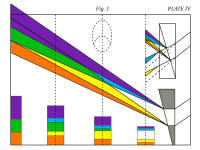
Photo from wikipedia
Did Goethe devise an empirically viable theory of classical ray optics? Or can we at least make use of his ideas to propose one? And if so, does this confront… Click to show full abstract
Did Goethe devise an empirically viable theory of classical ray optics? Or can we at least make use of his ideas to propose one? And if so, does this confront us with an intriguing case of theory underdetermination? In this paper, which is mainly a comment on the recent work of Olaf Müller, I shall address these three questions and argue for ‘no, yes, no’. This is in contrast to Müller, who has recently launched a vivid defense of Goethe-style ray optics (Müller in “Mehr Licht. Goethe mit Newton im Streit um die Farben.” Fischer, Frankfurt a.M., 2015a; Z Philos Forsch 69(4):569–573, 2015b; Z Philos Forsch 69(4):588–598, 2015c; Br J Hist Philos 24(2):322–346, 2016). Müller aims to give an almost positive answer to all three questions: ‘perhaps, yes, yes’. My overall line of argument will be that the rather restricted regime of classical geometrical optics of spectral colors (or ray optics, for short) allows at best for a weak form of transient theory underdetermination that, in turn and more straightforwardly, also allows for a structuralist reading in terms of two structurally equivalent formulations of one and the same theory. However, extending any of the rivaling models of ray optics other than Newton’s beyond the mentioned regime and embedding them into physics in total—especially in view of thermodynamics—leads to a contradiction. Hence, Newton’s theory is confirmed as the only consistent theoretical interpretation of ray optics.
Journal Title: Journal for General Philosophy of Science
Year Published: 2018
Link to full text (if available)
Share on Social Media: Sign Up to like & get
recommendations!